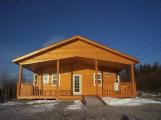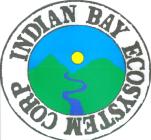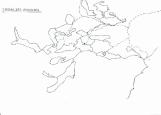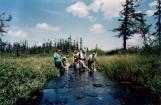1
The Indian Bay Ecosystem Committee was formed in 1988 in response to growing concern over the deterioration of the Indian Bay inland water system. In the 1970's and 1980's increased fishing pressure and easier access had a major impact on the watershed area resulting in decreased fish populations and a general decline in the quality of the environment. The corporation has a mandate to protect and conserve the recreational fisheries for tourist and local users.4
This corporation is a community based organization which democratically votes on any activities that are important to the conservation of the watershed. Four main priorities were identified, begining with a major clean up of the Indian Bay area, habitat enhancement, stock enhancement, and tourism development. The corporation has initiated and completed many projects which have returned this natural resource to its pristine state. Projects completed include environmental clean up, habitat restoration, a conservation plan with crown lands, water quality monitoring and a trout population assessment project.5
As of 2006 the Board of Directors of the Indian Bay Ecosystem Corporation were: John Waterman - President, William Davis - Vice President, Carl Howell - Secretary, Terry Fifield - Treasurer, Gary Collins, Perry Cook, Michael Cutler, Morgan Hill, Shane Noble, Eli Parsons, Murray Wells, and Daniel Whitten. The staff of the Ecosystem Corporation was: Winston Norris - General Manager, Patricia Hounsell - Office Administrator, Nathan Dyke - Compliance Monitor, Clayton Matthews - Compliance Monitor, Andy Cook - Field Technician, Maxwell Hunt - Field Technician and Dr. Blair Adams Research Development Liason.6
Mission Statement"We believe that all of us together have a shared responsibility to conserve and enhance our wilderness heritage, that our forest, rivers and streams form the lifeblood of our cultural and economic identity, and that this priceless gift must be preserved, protected and passed on as our own legacy to generations yet unborn"
7
The Indian Bay watershed covers approximately 700 square kilometers and is comprised of 16 large ponds and a number of other smaller ponds. The larger ponds included in the watershed are: Twarth Pond, First Pond, Four Mile Pond, Little Bear Cave, Indian Bay Big Pond, Skippers Pond, Back-up Pond, Third Pond, Indian Bay Pond, Alley's Pons, Mocassin Pond, Big Bear Cave, Big Wing's Pond, Little Wing's Pond, Southern Pond and Dirt Brook Ponds. A network of old roads offer automobile access to several ponds while other ponds are accessible by use of ATV or pickup truck in the summer and snowmobile in Winter. While other ponds are only accessible by boat.9
Indian Bay Ecosystem Corporation Cabin Located in Number Two Pond2000-2006
Indian Bay, Newfoundland, Canada
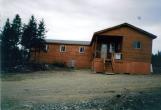
10
The Indian Bay Ecosystem Corporation carried out habitat restoration and research was conducted throughout the watershed. This work was done by local students who were attending various universities in Eastern Canada for both undergraduate and graduate degrees in biological sciences. Their efforts aided the community and Ecosystem Corporation in the development of a comprehensive management plan that incorporated scientific information into the management decisions for the fishery.11
Students employed by the Indian Bay Ecosystem Corporation travelling in boat to conduct researchc 2000
Indian Bay, Newfoundland, Canada

